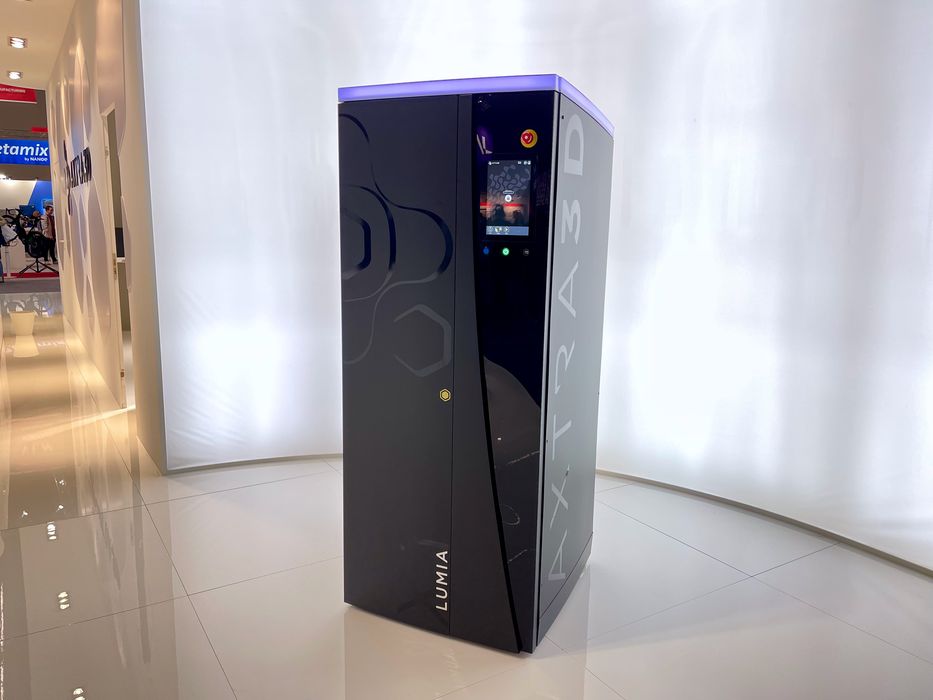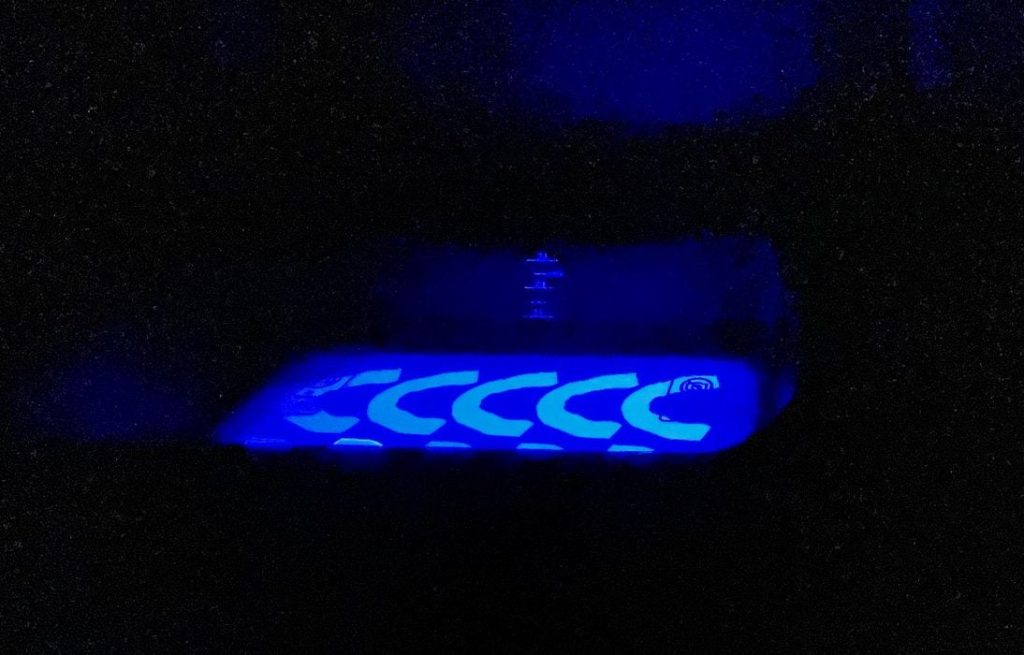
What’s going on inside Axtra3D’s Lumia 3D printer?
The startup company offers a resin 3D printer with a difference: it’s a combination of both SLA and MSLA approaches, all in the same box.
How could that work? It’s actually quite straightforward when you think about it, and I’m curious why no one thought of this before.
There are two main approaches for resin 3D printing these days:
- SLA: a laser tediously traces through the solid portions of each layer, and achieves resolution equal to the size of the laser dot
- MSLA: (“Masked SLA”) where an LCD panel selectively blocks light illuminating each layer. The entire layer is quickly completed, but resolution is dependent on the size of the pixels in the LCD panel
Two different approaches, and the choice between them is a tradeoff: best resolution but slow speed, or average resolution and fast speed. Usually, the answer depends on your needs.
Enter Axtra3D. The company sought a solution and ended up combining both SLA and MSLA in the same hardware.
They say the resulting combination, which they call HPS (“Hybrid Photosynthesis”) is able to achieve rapid print speeds, but at the same time provide excellent resolution. It basically breaks the tradeoff described above.
But how does this actually work? How can you have both technologies in the same box operating at the same time?
I spoke with Axtra3D representatives and to find out more, and actually witnessed the system in operation. Now I know what’s really going on inside their Lumia machines.
It’s hard to see in this crappy image I took of the build chamber through the window, but I think you’ll get the idea.

To build a layer, they light up the MSLA engine, which you can see as the majority of the illuminated area in the image. This cures the interior portions of the layer, and quite rapidly as compared to tracing it all with a laser.
At the same time, a laser fires up and begins tracing the exterior perimeter of the layer. The infill area being cured with the MSLA engine doesn’t quite extend through the perimeter, leaving a bit of space for the laser to do its work on the detailed outside edge.
Unlike the rough and square pixels of the MSLA engine, the laser sweeps along smoothly and cures beautiful curves and sharp edges as required.
Axtra3D also uses something called “TruLayer Technology”, which is their solution to the “peeling problem” that most resin systems suffer from. This means that layers can be pulled off almost instantly, greatly speeding up the print process.
The result is a 3D print that from the outside appears to be made with high-precision SLA, but was completed in basically the same print time as a typical MSLA job.
It’s a pretty cool compromise, and I’m wondering how the concept will be accepted by the market, which up to now has been faced with the SLA/MSLA puzzle.
The only disadvantage I see to HPS is that it may be challenging scaling up to large-format dimensions of 1000mm or bigger. With SLA, the laser can be made to sweep larger areas by simply angling the galvanometric mirror a bit more sharply. Because of this capability, certain SLA providers market quite large machines with massive build volumes.
I suspect HPS may not be scalable to that enormous size, because MSLA approaches are limited by the dispersion of light as the pixel pattern is enlarged. Because HPS uses MSLA techniques, it may be limited to non-large format build volumes.
Nevertheless, the Lumia line of 3D printers from Axtra3D do offer build volumes that are indeed larger than typical resin 3D printers to take advantage of HPS capabilities.
Via Axtra3D
